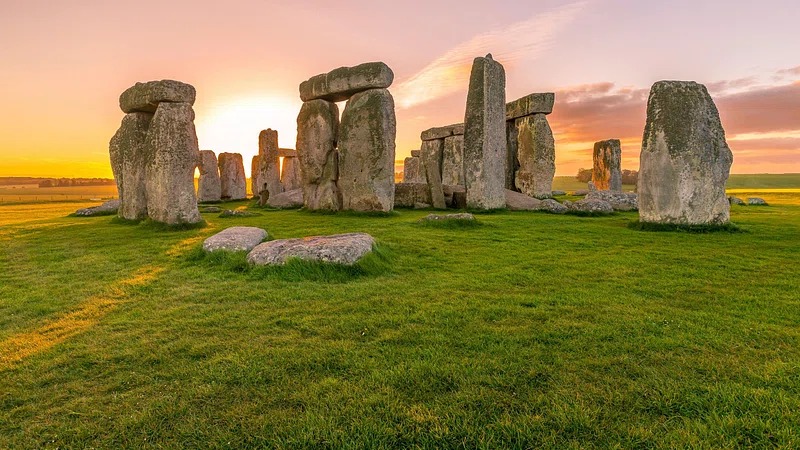Ley lines are one of the most enduring and intriguing concepts in the realm of mystical geography and earth mysteries. Proposed in the early 20th century by Alfred Watkins, these straight alignments purportedly connect various ancient sites, such as Stonehenge, the Great Pyramids, and other megalithic structures. Proponents argue that ley lines are imbued with spiritual or mystical energy, influencing the locations of sacred sites throughout history. Skeptics, however, dismiss them as mere coincidences or constructs of human imagination. Let’s explore the evidence both for and against the existence and significance of ley lines.
Evidence in Favor of Ley Lines
Historical Alignment of Ancient Sites
- Proponents point to the seemingly intentional alignment of ancient monuments, churches, and other significant landmarks. They argue that many of these sites built thousands of years apart, are connected by straight lines that span great distances.
- Alfred Watkins, in his book The Old Straight Track, documented numerous instances where these alignments were evident, suggesting that ancient builders were aware of and utilized ley lines.
Cultural Significance
- Various cultures have legends and myths about pathways of power or energy lines. In China, the concept of “dragon lines” (or “lung mei”) aligns closely with the idea of ley lines, and the practice of feng shui considers the flow of earth energies in its principles.
- Indigenous cultures in Australia and the Americas also have traditions that speak of spirit paths or songlines, believed to be ancient routes connecting sacred sites.
Geophysical Theories
- Some researchers propose that ley lines may correspond with natural geophysical phenomena, such as fault lines or magnetic fields. These natural lines of energy could have influenced ancient peoples in their choice of sacred sites.
- Modern geomancers and dowsers claim to detect these energy lines, suggesting that there is a measurable force that aligns with the concept of ley lines.
Evidence Against Ley Lines
Statistical Coincidence
- Critics argue that the alignment of ancient sites can be attributed to chance rather than deliberate planning. Given the vast number of ancient sites and natural formations on the earth, some degree of alignment is statistically inevitable.
- The human brain is predisposed to finding patterns, even where none exist, leading to the perception of deliberate alignments when they are random.
Lack of Empirical Evidence
- There is no scientific evidence to support the existence of energy fields or mystical forces associated with ley lines. Studies attempting to measure such energies have consistently failed to produce verifiable results.
- Skeptics point out that ley lines are often defined in retrospect; lines are drawn to fit existing sites rather than sites being discovered along pre-existing lines.
Subjectivity and Interpretation
- The definition and identification of ley lines can be highly subjective. Different researchers often produce different maps and alignments, suggesting a lack of objective criteria.
- The placement and significance of ancient sites are influenced by a myriad of factors, including religious, cultural, and practical considerations, which may have little to do with ley lines.
Ley lines occupy a fascinating niche at the intersection of history, mythology, and geography. For believers, they represent a hidden network of energy that has guided human activity and spiritual practice for millennia. For skeptics, they are a testament to the human tendency to impose order and meaning on the natural world, even where none exists. Whether pathways of mystical energy or constructs of the imagination, ley lines continue to captivate and inspire, inviting us to look deeper into the mysteries of our ancient past.
Have you had any personal experience with ley lines? Do you think they’re real? Share your thoughts in the comments below!
